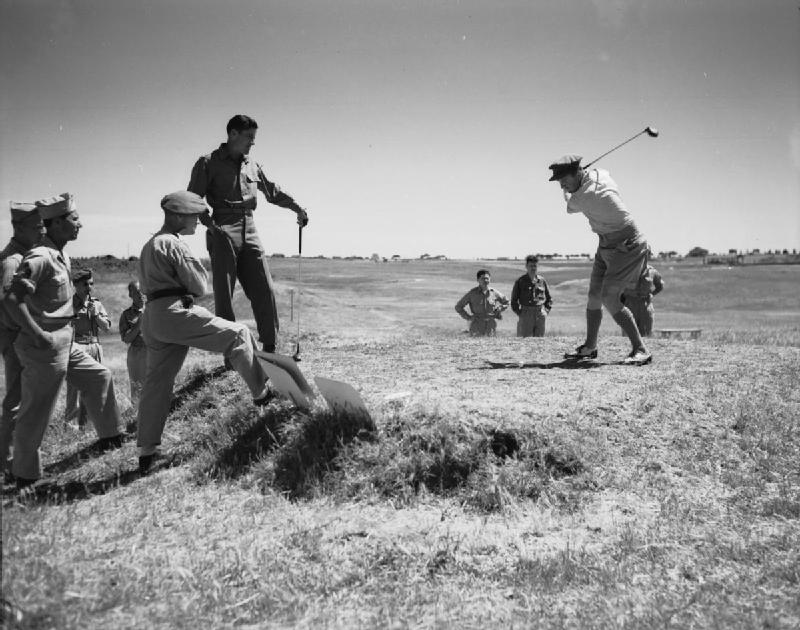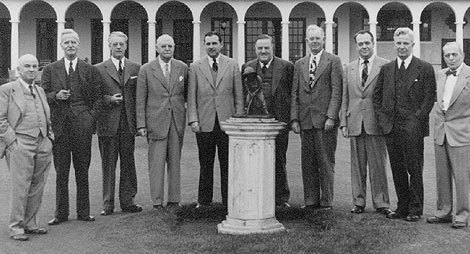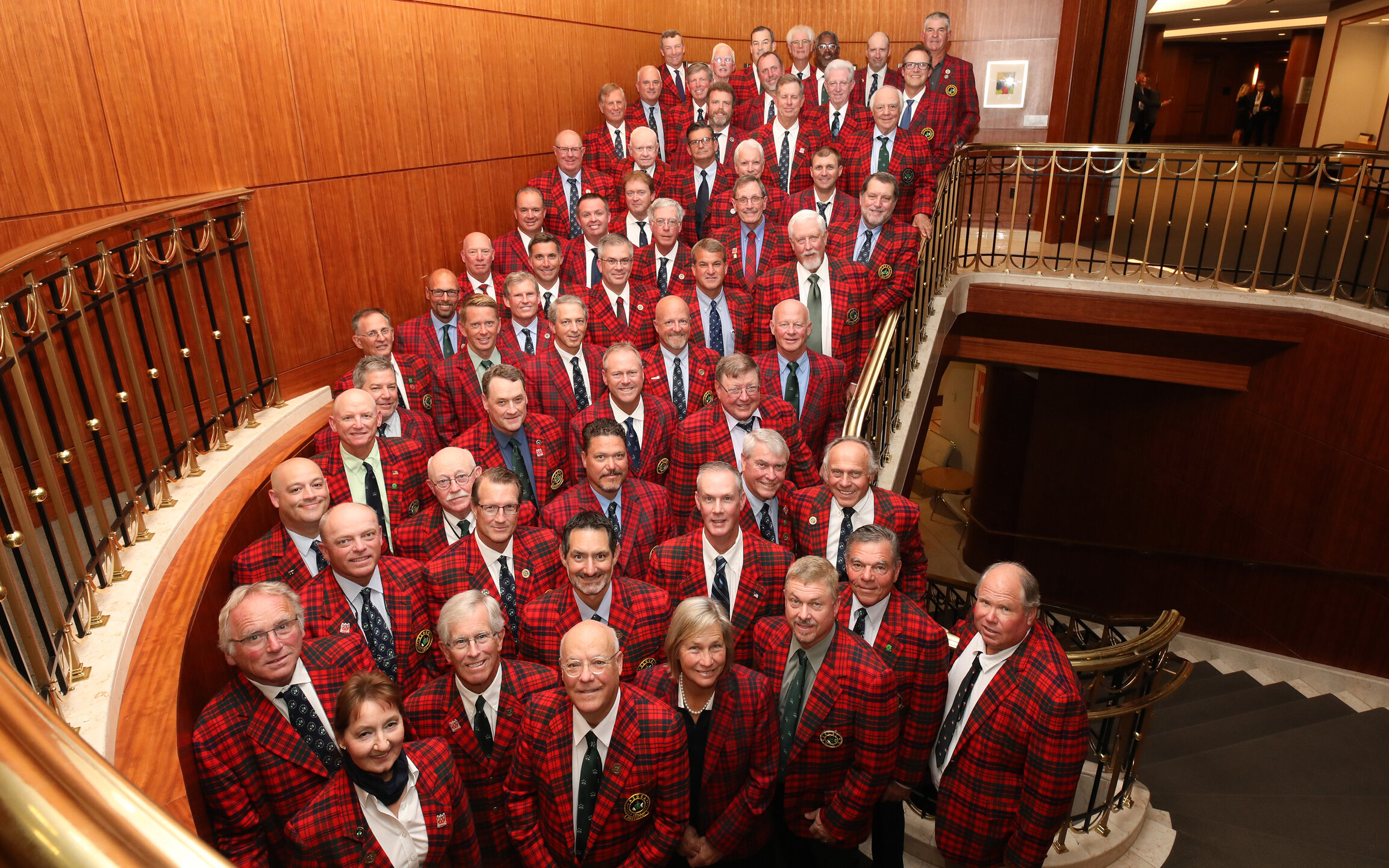Who We Are
Beginnings
As World War II ended and America continued its recovery from the previous decade of depression, golf course architects in the U.S. sensed a real opportunity for a golf boom as people sought more recreational opportunities. Having spent most of the war years short of work and wondering if course architecture had become a lost art, these early visionaries wanted to be in position to respond to the coming demands by creating a professional organization of golf architects. The new group aspired to be the influential, collective voice in the industry, similar in makeup to the long-standing American Society of Landscape Architects.
Spearheaded by Robert Bruce Harris and Robert Trent Jones, the first meeting of this new association, dubbed the “American Society of Golf Course Architects” (by William Langford), was held with several architects from around the nation on Feb. 13, 1947, at the Hotel New Yorker.

Purpose
The missions of the ASGCA are much the same today as when the original members outlined the Articles of Incorporation:
- Foster the game of golf, its growth and advancement.
- Foster professionalism of ASGCA members through education, promotion and fellowship of the world’s leading golf course architects.
- Support design excellence by creating golf courses that are technically, strategically and aesthetically excellent while meeting the economic, environmental and other needs of golf course owners, developers and communities.
- Expand the opportunities of ASGCA members to better serve their clients and the game of golf.

Founding Fathers
The 14 Charter Members who originally made up ASGCA were a diversified group of professionals, including five landscape architects/agronomists, four contractors, three golf professionals, and two businessmen.

From left to right: William P. Bell, Robert White, W.B. Langford, Donald Ross, Robert Bruce Harris, Stanley Thompson, William F. Gordon, Robert Trent Jones, Sr., William Diddel, and J.B. McGovern. Original ASGCA founders not pictured: Perry Maxwell, Jack Daray, Wayne Stiles and Robert “Red” Lawrence.
The Ross Tartan
The red plaid jackets ASGCA members wear are made from a material known as the Ross tartan. This tartan was adopted by ASGCA in 1973 as a tribute to the group’s honorary first president, golf course architect Donald Ross. Scottish clans are typically identified by one or more distinctive tartan patterns; Ross hailed from Dornoch, Scotland. The distinctive tartan is known throughout the golf industry as belonging only to ASGCA architects.

Past Presidents
Implored by his colleagues to be the first president, legendary architect, Donald Ross, declined the invitation due to the feared strain it might put on his deteriorating health. Instead, Ross was elected Honorary President by acclamation, and Robert Bruce Harris assumed the role of first acting president. Together, they head a list of past presidents that make up a virtual Who’s Who of Golf Course Architecture.
1947-1972
1947 Robert Bruce Harris & Donald Ross
1948-1949 Robert Bruce Harris
1949-1950 Stanley Thompson
1950-1951 Robert Trent Jones
1951-1952 William B. Langford
1952-1953 William P. Bell
1953-1954 William F. Gordon
1954-1955 William H. Diddel
1955-1956 James G. Harrison
1956-1957 Robert F. Lawrence
1957-1958 William F. Bell
1958-1959 Howard Watson
1959-1960 David W. Gordon
1960-1961 J. Press Maxwell
1961-1962 C.E. Robinson
1962-1963 Ralph Plummer
1963-1964 William B. Langford
1964-1965 Robert F. Lawrence
1965-1966 William Diddel
1966-1967 Floyd Farley
1967-1968 William F. Gordon
1968-1969 Fred Garbin
1969-1970 James G. Harrison
1970-1971 E. Lawrence Packard
1971-1972 C.E. Robinson
1972-1998
1973-1974 Ellis Maples
1974-1975 Robert Muir Graves
1975-1976 Geoffrey Cornish
1976-1977 Edwin B. Seay
1977-1978 William Amick
1978-1979 Rees Jones
1979-1980 Jack Kidwell
1980-1981 Richard Phelps
1981-1982 Richard Nugent
1982-1983 Arthur Jack Snyder
1983-1984 Ted Robinson
1984-1985 Mike Hurdzan
1985-1986 John Watson
1986-1987 Kenneth K. Killian
1987-1988 Roger Rulewich
1988-1989 Pete Dye
1989-1990 Robert Trent Jones, Jr.
1990-1991 Dan Maples
1991-1992 Tom Clark
1992-1993 Arthur Hills
1993-1994 Jerry Matthews
1994-1995 Don Knott
1995-1996 Jeffrey Brauer
1996-1997 Denis Griffiths
1997-1998 Alice Dye
1998-2025
1998-1999 Bob Lohmann
1999-2000 John Lafoy
2000-2001 Brian Ault
2001-2002 Damian Pascuzzo
2002-2003 Jay Morrish
2003-2004 Clyde Johnston
2004-2005 Bill Love
2005-2006 Tom Marzolf
2006-2007 Greg Muirhead
2007-2008 Steve Forrest
2008-2009 Bruce Charlton
2009-2010 Doug Carrick
2010-2011 Erik Larsen
2011-2012 Rick Phelps
2012-2013 Bob Cupp
2013-2014 Rick Robbins
2014-2015 Lee Schmidt
2015-2016 Steve Smyers
2016-2017 Greg Martin
2017-2018 John Sanford
2018-2019 Jeff Blume
2019-2020 Jan Bel Jan
2020-2021 Forrest Richardson
2021-2022 Jason Straka
2022-2023 Brit Stenson
2023-2024 Mike Benkusky
2024-2025 Brian Costello
Current Leadership
Through the tremendous efforts of our committee volunteers, ASGCA functions as a successful non-profit organization dedicated to fostering professionalism, supporting golf design excellence, helping grow the game and expanding opportunities to help ASGCA members better serve their clients.
ASGCA Board Of Governors
OFFICERS
Brian Costello, ASGCA
President
Mark Mungeam, ASGCA
Vice President
Bill Bergin, ASGCA
Treasurer
Chris Wilczynski, ASGCA
Secretary
Mike Benkusky, ASGCA
Immediate Past President

GOVERNORS
Gary Brawley, ASGCA
Todd Clark, ASGCA
Joel Hornickel, ASGCA
Brandon Johnson, ASGCA
Thad Layton, ASGCA
Stephen Kay, ASGCA
Todd Schoeder, ASGCA
Steve Smyers, ASGCA
Frequently Asked Questions
How do I become a member of ASGCA?
In addition to these criteria, applicants must adhere to the ASGCA Code of Ethics and be prepared for the peer-review of their representative courses. The application process is lengthy, complex and can take up to two years to complete. Only golf course architects may be ASGCA members; ASGCA has no “supplier” or “student” category of membership. If you’d like to receive an application, contact Aileen Smith at aileen@asgca.org.
What kind of training do I need to become a golf course architect?
- Landscape Architecture / Land Planning
- Environmental Knowledge
- Civil Engineering
- Agronomy & Turf Management
- Heavy Construction
- Plans, Specifications & Graphic Production
- Cost Estimating
- Public Speaking
Those interested in the field should become associated with a member of the American Society of Golf Course Architects to learn more about the various demands of the profession. For a list of members near you, visit our Find an Architect section.
Which colleges offer a degree in golf course architecture?
The College of Art in Edinburgh, Scotland offers a graduate-level certificate in golf course architecture. For more information about that program, visit the European Institute of Golf Course Architects website.
How do I find work as a golf course architect?
How do I get in touch with a particular golf course architect?
If you need answers beyond what is listed on the ASGCA website, please visit our contact form or call ASGCA at 262-786-5960.
Why do ASGCA members wear the red plaid jackets?
Where do I find information about the golf course architect who designed my club?
ASGCA has several resources available to help answer questions about the golf course architect who designed your club’s layout. Questions may be addressed to Marc Whitney and will be answered as soon as possible.
